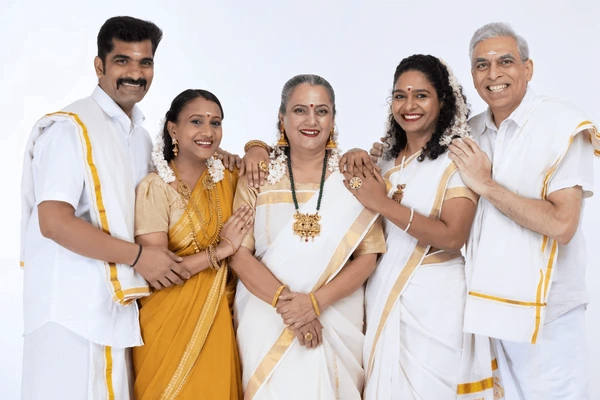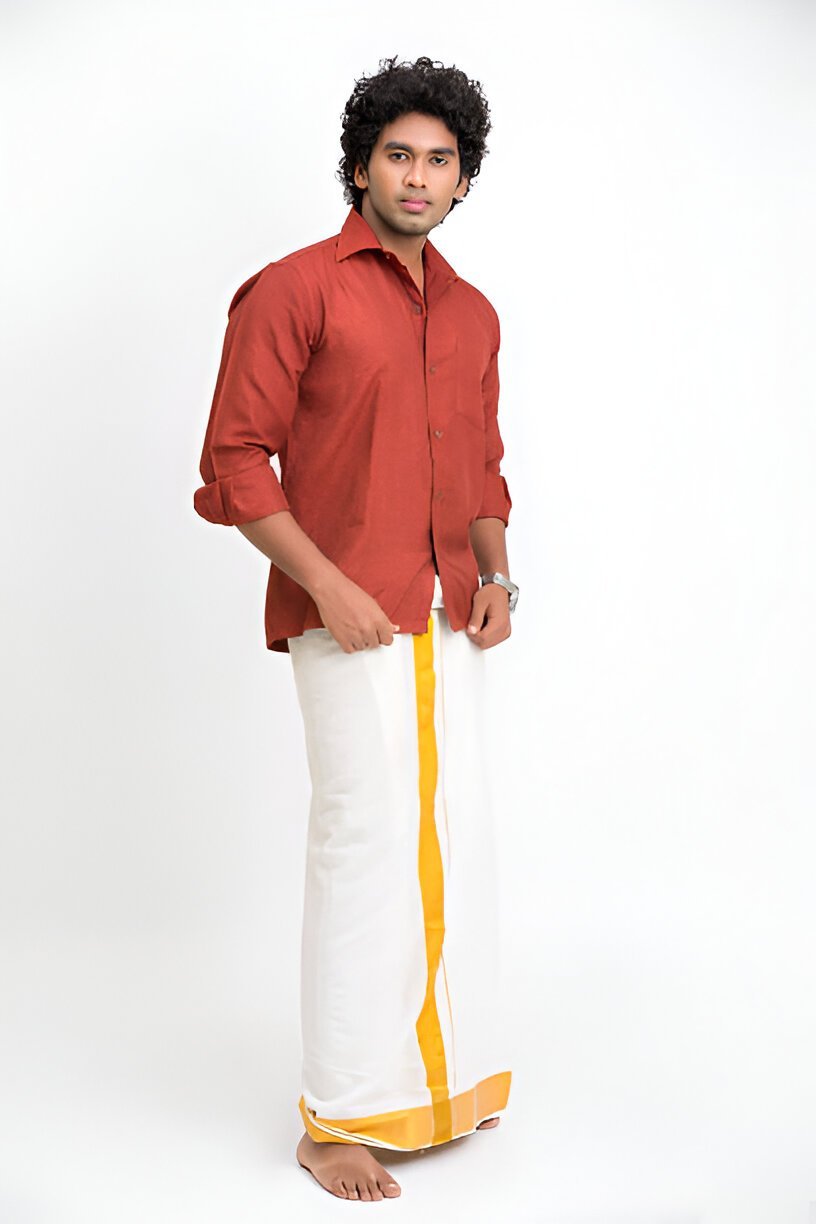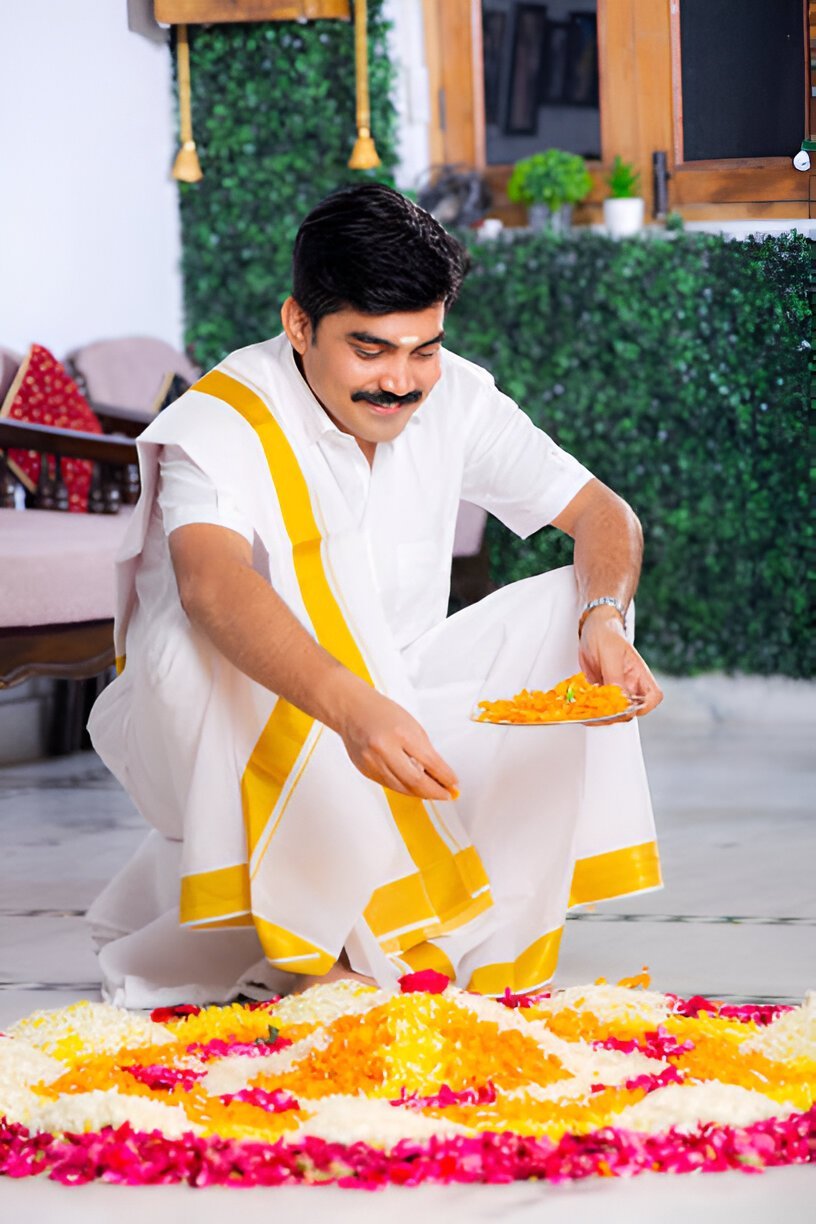How to Choose the Perfect South Indian Dhoti for Weddings and Festivals

Introduction to the South Indian Dhoti
If there is one traditional garment that has an incredible cultural significance in the southern states of India, it is the South Indian dhoti. This unstitched piece of cloth, often cotton or silk, goes around the waist and legs, symbolizing purity and simplicity. For centuries, dhotis have been part of South Indian attire for men during religious occasions, festivals and everyday use. Its appeal remains timeless because it represents ones culture as well as upholding tradition.
How to Rock a Black Saree Blouse Like a Celebrity
Types of South Indian Dhotis
The different styles of South Indian dhotis reflect a variety of cultural practices within this region. Veshti is the most common type usually white or cream colored with gold or colored stripes at its border. Panchakacham is a more intricate style donned during religious ceremonies or weddings involving a peculiar style of draping.

The range of fabrics available for dhotis includes light weight cotton that can be worn daily to luxurious silk that is reserved for special occasions. Each kind highlights social hierarchy and religion among Indians in south.
How to Wear a South Indian Dhoti
It also involves some skillful draping depending on the style used in wearing a South Indian dhoti which however slightly varies from one style to another. In this respect, simply wrap your dhoti around your abdomen and tie it using a knotting technique you are comfortable with but make sure you feel comfortable while doing this process so as to allow movement.
It may be difficult for starters to master wearing a dhoti but as they continue practicing it turns out into an elegant dress filled with dignity when worn properly by them. By focusing on details and following their customs one should avoid making mistakes such as loose knot or uneven pleats.
Occasions to Wear a South Indian Dhoti
In many ways, the versatility as well as cultural meanings associated with each different occasion makes all types of south Indian dhoti applicable. During weddings, a groom may wear silk dhoti which matches with a shoulder cloth known as angavastram which depicts purity and reverence.

Dhotis are also worn by men during religious ceremonies like Pongal, Onam and Diwali since they relate to deeper meanings of these events. In the country side, daily wear still includes wearing a dhoti while in cities it is only worn on special occasions and therefore represents the continuum of traditions through modernity.
The Role of South Indian Dhoti in Modern Fashion
South Indian dhoti influence has been seen in contemporary fashion where designers have recast them for younger people. Some of these changes include innovative draping styles, combination with western attire or use of unusual fabrics that make up modern version of dhoties.
These new types of dhottis have become popular not just among Indians but across the world because they represent an eclectic mix between tradition and contemporaneity. Its consistent appearances in fashion weeks means that it remains relevant to this ever-changing field.
Deciding on the Ideal Dhoti for Different Occasions
The selection of a South Indian dhoti depends mainly on the event and desired look. For formal occasions such as marriages or religious functions, silk dhotis with intricate borders are most preferred since they give off an air of gracefulness and respect. For informal or casual attire, nothing is more practicable than a plain cotton dhoti.
Additionally, it is best to put on suitable accessories like kurta or angavastram in order to enhance the general outlook. In conclusion, matching the color and mode of the dhoti with the theme of the event makes one to be a cultural epitome of that occasion that he takes part in.
Dhoti vs Lungi: The Difference.
These two garments are traditional to South India but they differ greatly in terms of cultural meaning, fabric and draping method. Formal and religious occasions are often associated with dhotis, which signify purity as well as tradition.
The material used in making it is mainly cotton or silk, and it must be draped a particular way. On the other hand, lungis are less formal and can be worn at home for everyday chores. They tend to be shorter, lighter in weight and as such easier to wrap around oneself.Understanding these differences reveals how each suit serves its own unique function in South Indian culture.
Care of a Dhoti from South India.
To maintain quality and durability of a South Indian dhoti you should take care of it properly. Cotton dhotis need to be washed using cold water so that they do not shrink or fade while silk ones require gentle treatment; either dry cleaning or hand washing is suitable for them.
Ironing should be done under low heat settings to avoid destroying the fabric while storing dhotis in dry cool areas can reduce chances of mildew formation on them.Proper maintenance means that the dhoti will stay exquisite hence being passed from one generation to another like an heirloom.
Famous Personalities And Their Signature Dhoti Styles
The south Indian dhoti has been popularized by several influential people who have made it their signature wear.Referring back to Mahatma Gandhi’s practice of simplicity, nonviolence and his campaign against colonialism; this garment became world famous because he chose to dress himself up like that during India’s struggle for independence.
In addition, political leaders and celebrities based in southern part also put on this apparel during public gatherings enabling them connect with ordinary citizens and display their cultural heritage.Largely responsible for keeping the saree alive till present day have been these individuals.
Where to Buy Original South Indian Dhotis in India
For genuine South Indian dhotis, one must visit traditional markets and also modern shopping centers. Cities like Chennai, Madurai and Coimbatore are renowned for their specialized dhoti showrooms that offer a variety of fabrics, designs, and prices.
Online platforms have also become popular, providing access to high-quality dhotis from the comfort of home.When buying a dhoti, it is important to consider factors such as quality of material used to make it, beadwork on the border and workmanship so as not to buy a counterfeit item.For example, one can decide on what type of dress they want for daily use or celebrations based on certain attributes; this way they get connected with regional traditions.



